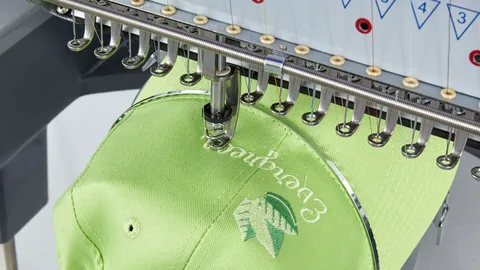Mastering Hat Digitizing For Custom Embroidery Logos
Understanding Hat Embroidery Digitizing
Hat embroidery digitizing turns logos, designs, or artwork into digital files. These files allow embroidery machines to read them. Unlike flat garments, hats have a curved surface, which makes digitizing more technical and precise. Embroidery digitizing services are key. They ensure clean stitching, support professional branding, and create designs that last.
Why Hats Are Unique For Custom Logo Embroidery
Hats are one of the most popular items for promotional branding because they are visible, durable, and versatile. But their structured panels and seams can create challenges during embroidery. A logo that looks perfect on a t-shirt might distort when placed on a cap. Digitizing for hats ensures the stitches curve with the crown. This keeps the design clear, even when it’s small or detailed.
Choosing The Right File Format For Embroidery
To digitize hats, you must begin with a high-resolution artwork file that captures fine details. Most embroidery digitizing services request formats like PNG, AI, or EPS. The cleaner the design file, the easier it is to create accurate stitch paths. Once digitized, the design is usually converted into embroidery machine formats such as DST, PES, or EXP. These formats tell the machine exactly where to place each stitch, how to manage density, and how to handle trims.
The Role Of 3D Puff Embroidery In Hat Digitizing
One of the most trending techniques in custom logo embroidery is 3D puff embroidery. This style uses foam under the stitches to create a raised, textured look that stands out on hats. Sports teams, fashion brands, and streetwear designers use puff embroidery. It makes their logos stand out. Digitizing for 3D puff requires special adjustments, like wider satin stitches and careful underlay, to keep the foam in place. If the digitization is incorrect, the puff can collapse or appear uneven.
Stitch Types That Work Best On Hats
Not every stitch works well on a curved surface. For hats, digitizers often rely on:
- Satin stitches for letters and outlines, as they provide shine and smooth edges.
- Fill stitches for larger logo areas, balancing density and coverage.
- Underlay stitches to stabilize the fabric and prevent distortion.
A skilled digitizer adjusts stitch direction and density based on the hat material. This can be cotton, polyester, wool, or mesh.
Positioning And Size Limitations For Hat Logos
Embroidery machines have limited sewing areas when working with hats. Most designers restrict their designs to about 2.25 inches in height and 5 inches in width. If a logo has excessive detail or size, some parts may not stitch together in a clear manner. Professional embroidery digitizing services simplify designs. They adjust line thickness and optimize placement. This makes the logo look sharp in the sewing area.
Common Mistakes When Digitizing Hats
Many beginners try to digitize hats the same way as flat garments, which often leads to errors. Common mistakes include:
- Ignoring the center seam causes misaligned logos.
- Using tiny text that gets lost in stitches.
- Placing too much density makes hats stiff and uncomfortable.
- Forgetting to use center-out and bottom-up sequencing, which keeps the fabric from shifting, is a common mistake.
Professional digitizers know these rules. They use them to create balanced designs that look great on any cap style.
Branding Impact Of Custom Embroidered Hats
Digitized hat embroidery is not a decoration — it is a branding powerhouse. Businesses use custom logo embroidery on hats. This shows professionalism, boosts identity, and enhances visibility. From small startups to global corporations, embroidered caps are a walking advertisement. Fashion designers are blending traditional embroidery with modern influences. For example, they use Egyptian artwork motifs. This creates unique and trendy branding styles.
Choosing Professional Embroidery Digitizing Services
While software tools exist for DIY digitizing hat embroidery requires experience and precision. Professional digitizing services optimize every detail for curved surfaces. They ensure that the team positions the 3D puff designs with precision. This helps logos stitch with precision, avoiding any thread breaks. Outsourcing this process saves time. It also cuts down on material waste and ensures a polished final product that is ready for production.
Technology Advancements In Hat Embroidery Digitizing
Modern embroidery digitizing software offers great features. You can use automatic stitch simulation, adjust density, and see a 3D preview. These tools allow digitizers to see exactly how a logo will look on the curved surface of a hat before running it on the machine. This reduces trial and error, saves thread, and prevents production delays. The combination of skilled digitizers and smart technology ensures high-quality results every time.
The Future Of Custom Hat Branding
As businesses and fashion brands search for unique ways to stand out, custom embroidered hats will continue to evolve. New materials, fresh art ideas, and worldwide design trends are shaping the future of embroidery. Sustainable fashion is gaining popularity. Eco-friendly threads and fabrics have become the norm in hat embroidery. Digitizing isn’t only about getting the tech right. It’s also about meeting consumer values and embracing design innovation.



Leave a Reply
Want to join the discussion?Feel free to contribute!